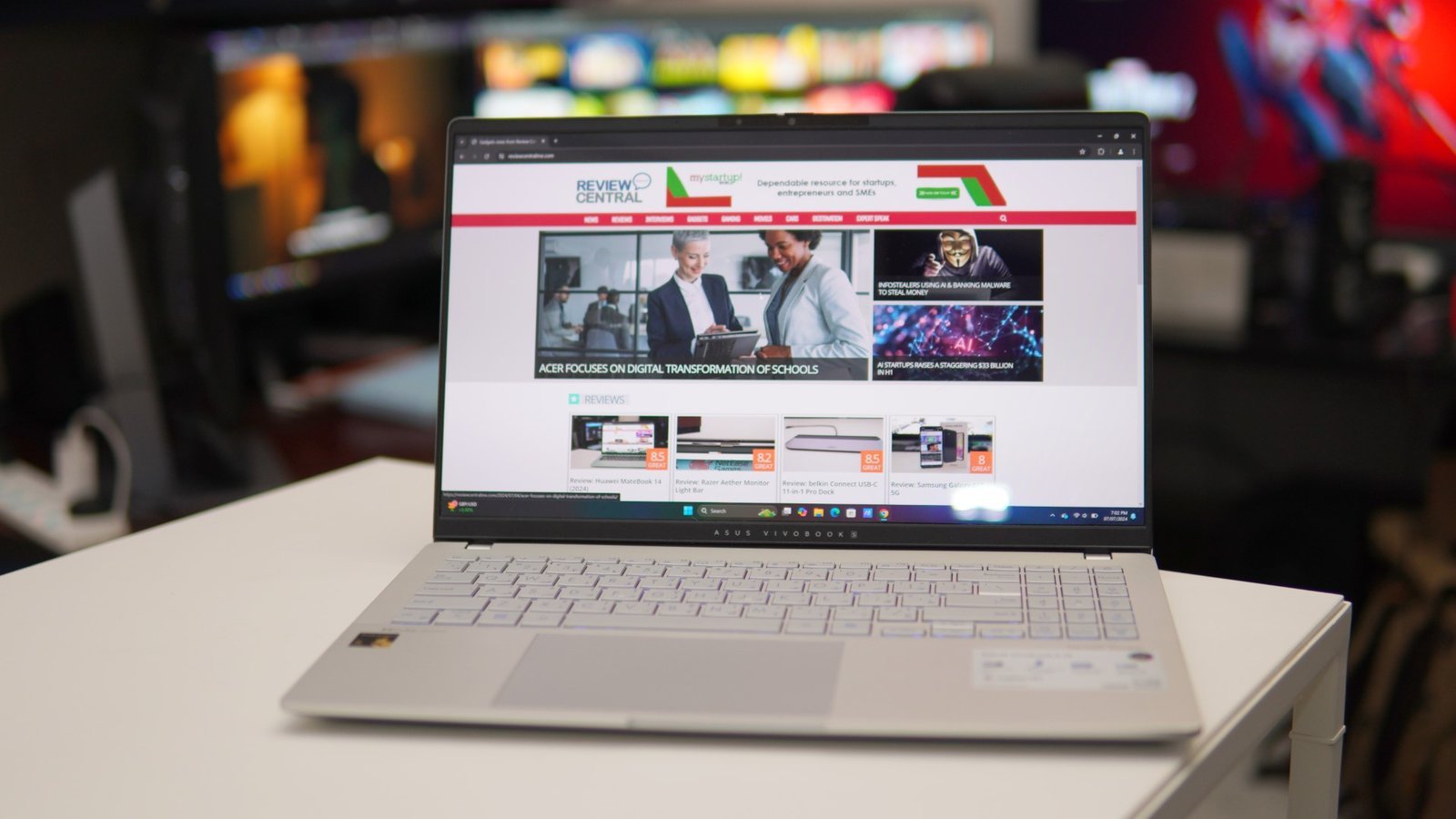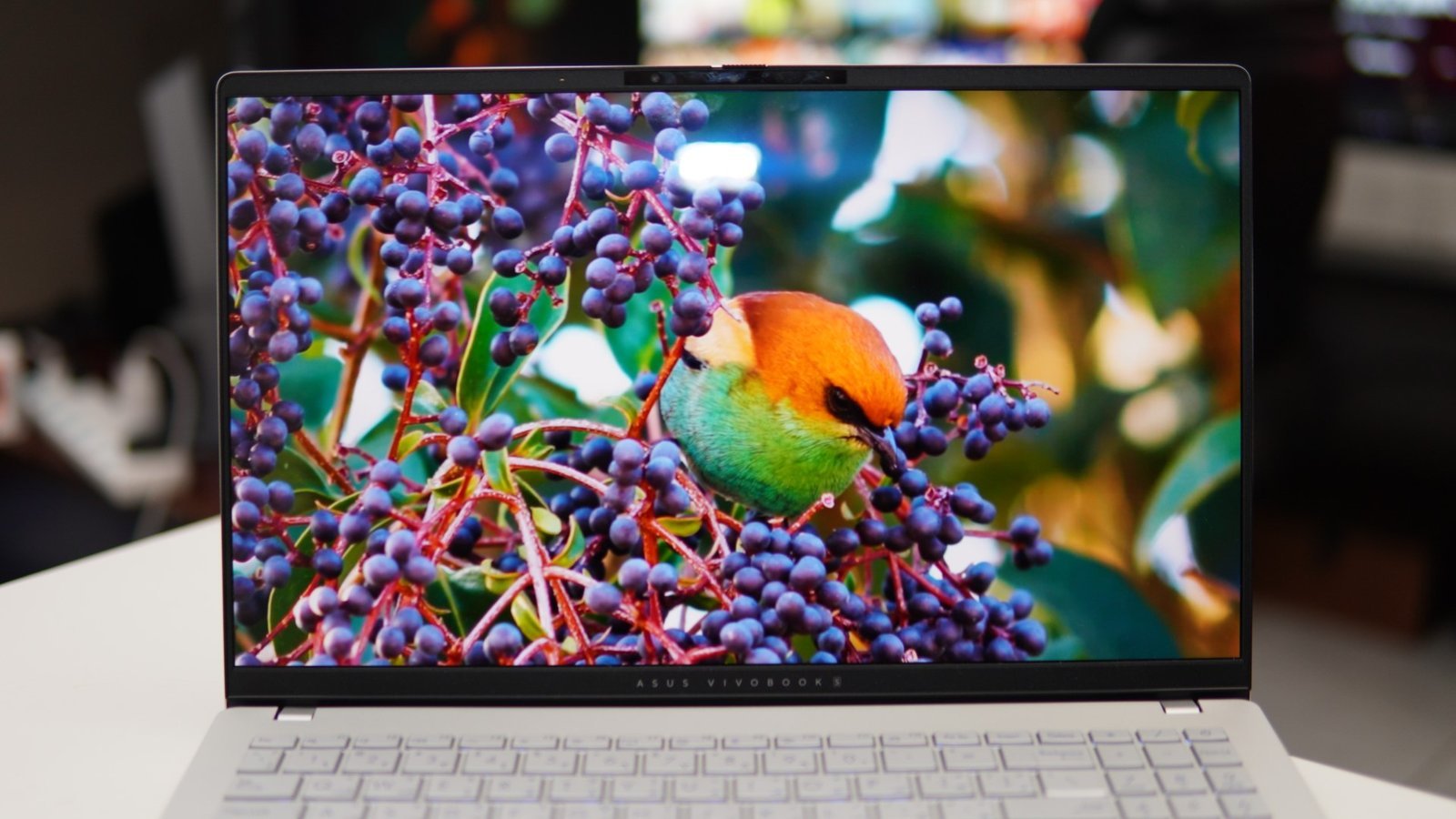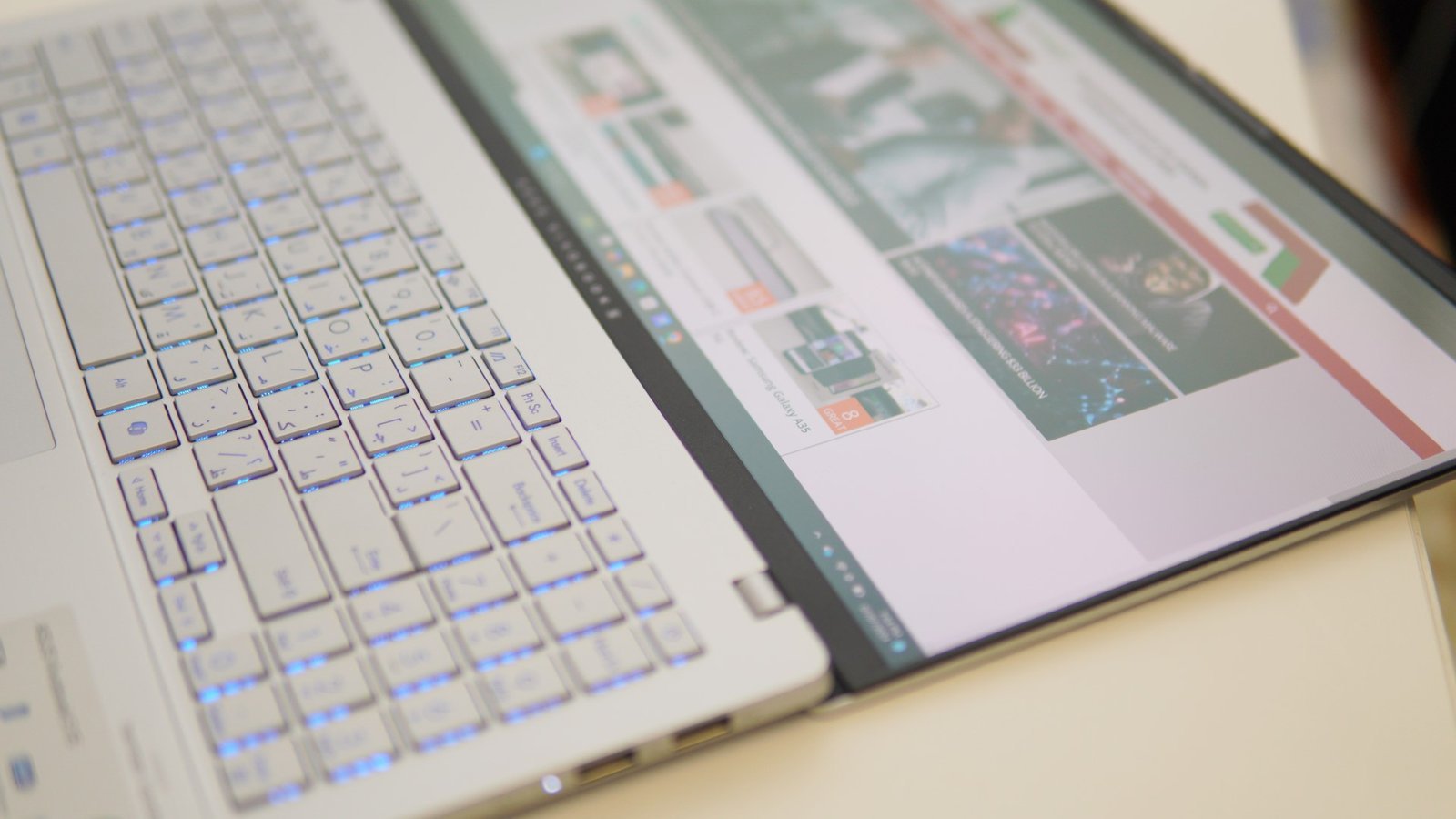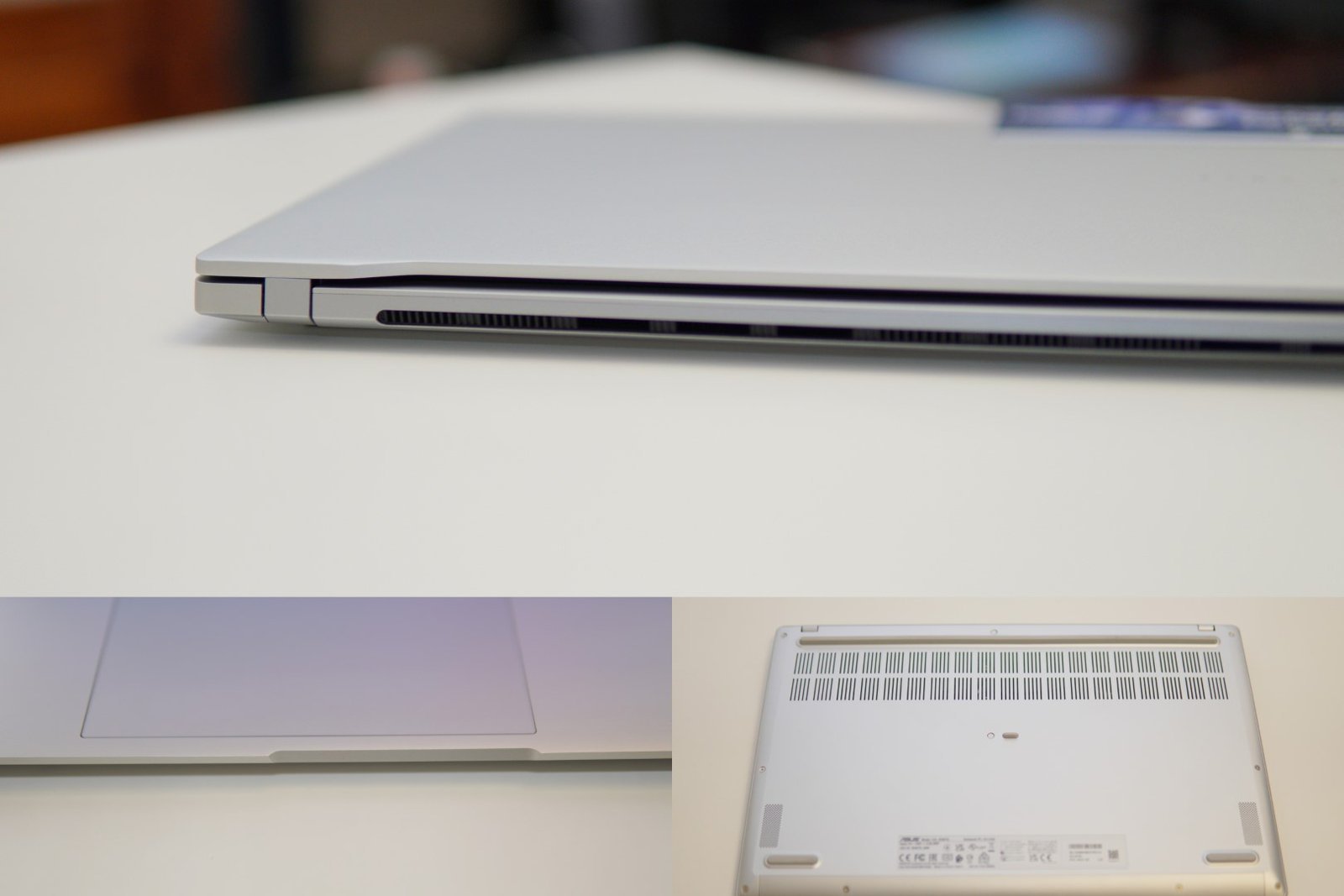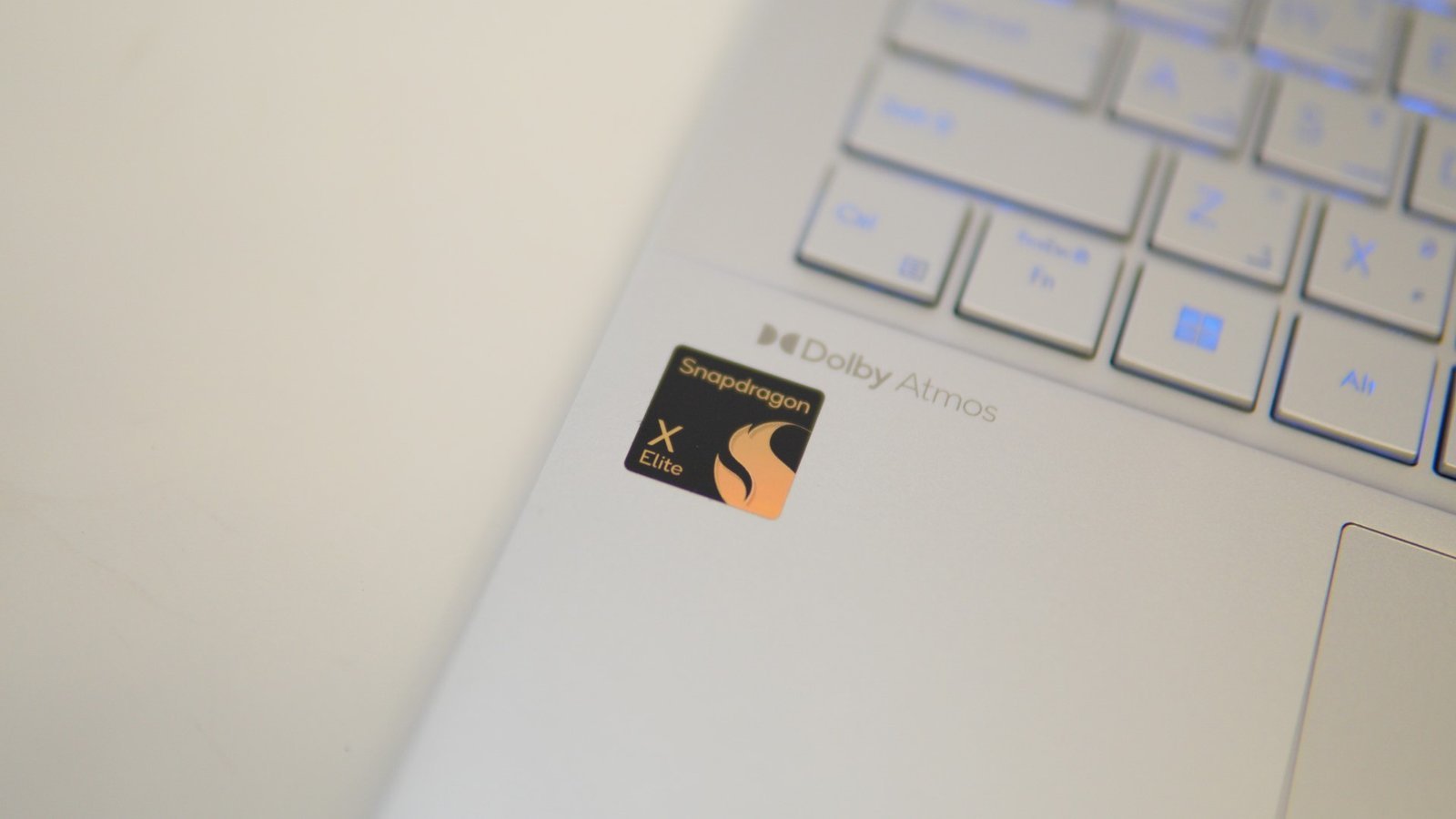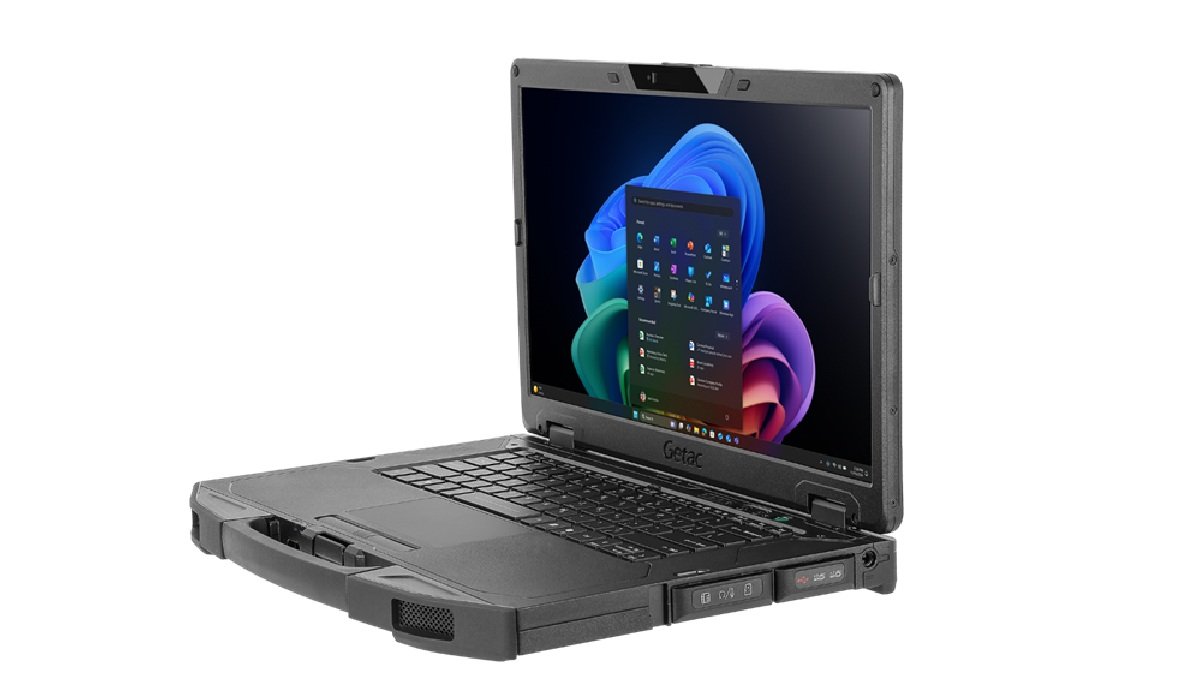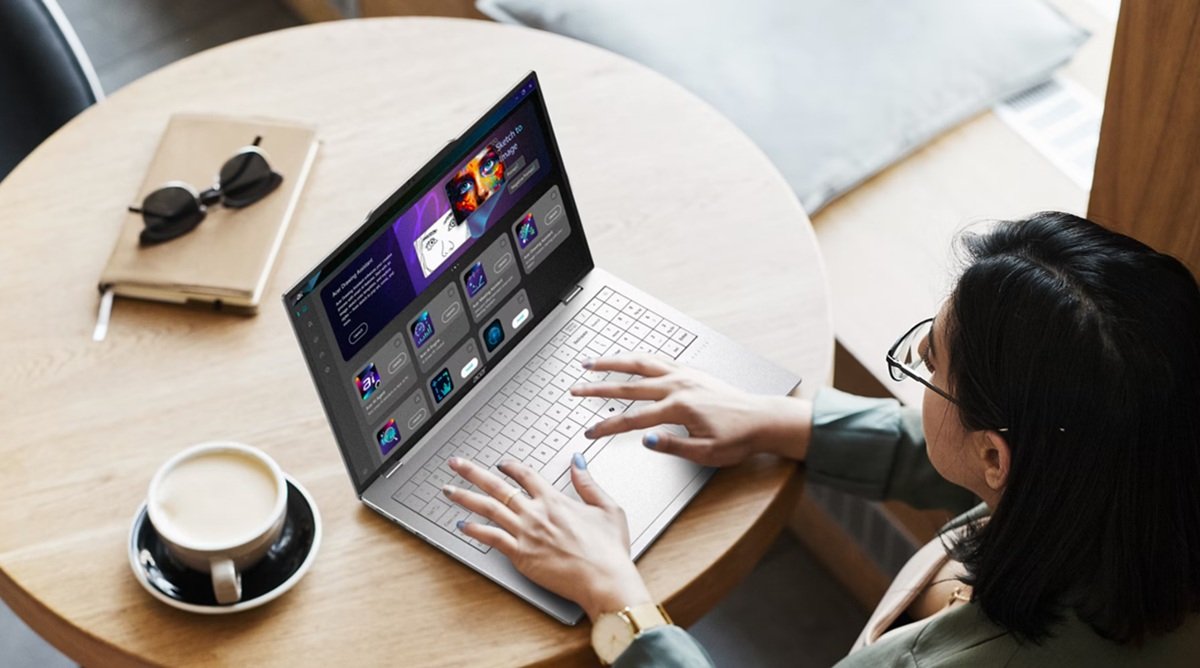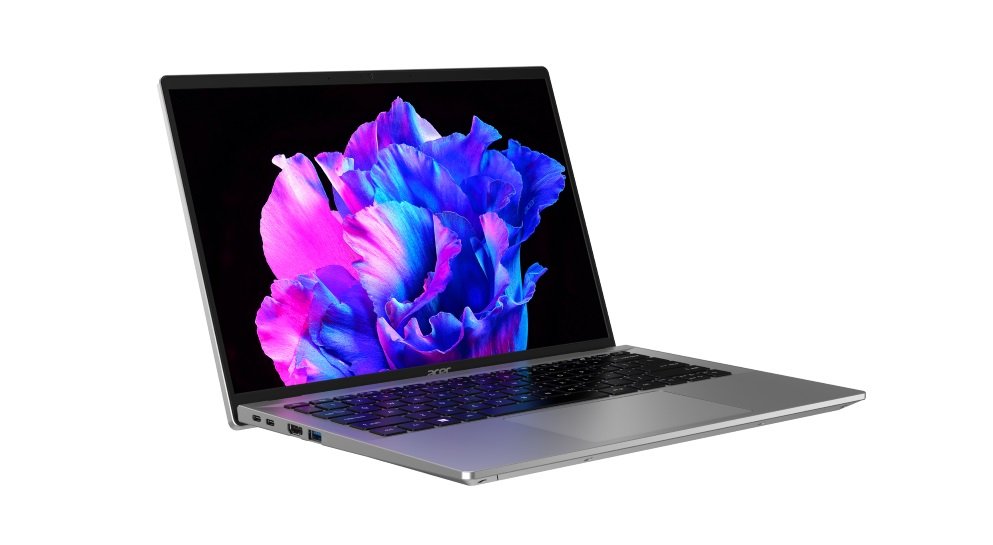Along with the recent announcement of Qualcomm’s Snapdragon ARM processors for Windows, several laptop manufacturers released new Copilot+ PCs, including ASUS. We got a chance to try out the new ASUS Vivobook S 15 (S5507) Copilot+ PC, and here are our thoughts about it.
Design
While the new laptop features a familiar design, the Vivobook S 15 (S5507) is the first in the series to sport an ARM-based processor. The laptop has a dimension of 35.26 x 22.69 x 1.47 ~ 1.59 cm, and the device weighs 1.42 kg. The chassis comes in Cool Silver color.
The main display is a brilliant 15.6-inch OLED panel, sporting 3K screen resolution (2880 x 1620). The OLED panel is also complimented with a 120Hz refresh rate and 600 nits of peak HDR brightness. The screen also comes with Display HDR True Black 600 certification, and support for 1.07 billion colors.
The display can be set at 180 degrees, and there is a Full HD camera on the top bezel with support for Windows Hello. For those who prefer privacy, the camera also comes with a physical privacy shutter.
In terms of connectivity, there are two high-speed USB 3.2 Gen 1 Type-A ports on the right side, followed by an HDMI 2.1 port, two USB 4.0 Gen 3 Type-C ports, a MicroSD card reader, and one 3.5mm audio jack on the left side. The USB-C port has support for display connections and power delivery.
The outer lid of the laptop features a silver color. There is the ASUS VIVOBOOK branding, located on the middle-right side of the outer lid.
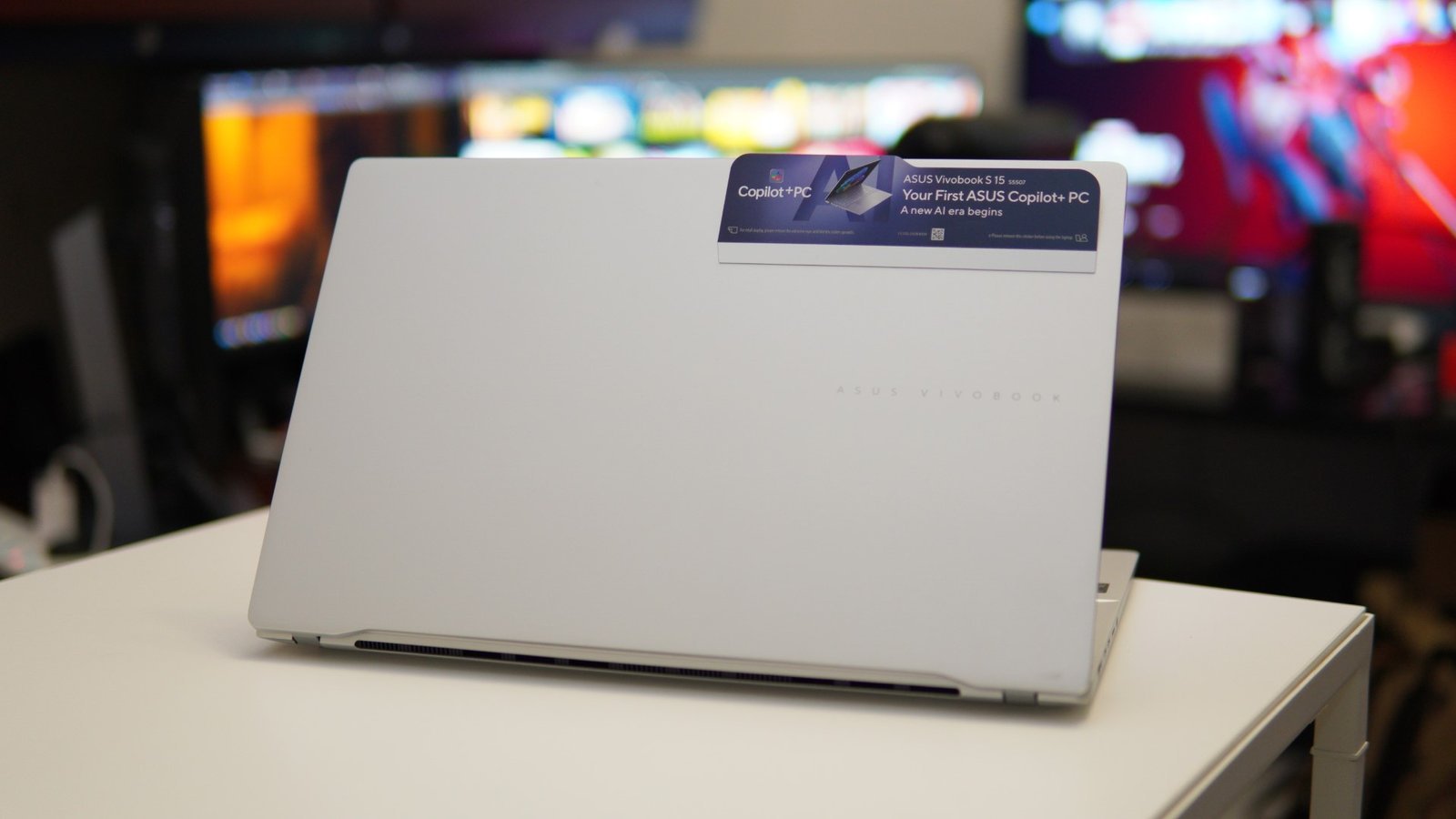
On the rear side of the laptop are the exhaust vents that push out the hot air. The intake vents are located on the bottom panel. There are two built-in speakers, located on the bottom panel.
The chiclet keyboard of the laptop features backlit lighting. The keyboard is also pleasant to type on, thanks to the 1.7mm key travel. There is now a new dedicated CoPilot key, located next to the directional buttons.
Software and Performance
The main selling point of the ASUS Vivobook S 15 (S5507) Copilot+ PC is the Qualcomm Snapdragon X1E-78-100 SoC, the fastest variant of the Elite ARM series, featuring a total of 12 computing cores that are clocked at 3.4 GHz speeds and 42MB of cache. While the chip uses the integrated Adreno GPU, there is also the Neural processor called the Qualcomm Hexagon with 45 TOPS, that helps for enhanced AI performance with CoPilot+ Windows features.
Speaking of which, the laptop comes with the latest Windows 11 Home OS, installed atop a blazing fast 1TB PCIe 4.0 NVMe SSD. However, at the time of review, some of the CoPilot+ features of Windows 11 were not ready for use. That said, users will be able to use the latest AI based features, such as the CoPilot AI chat, AI snipping tool, AI Photos, AI Paint, AI Clipchamp, and more. The new Paint app comes with a new feature called CoCreator, that helps users in generate creative artwork with the help of AI.
When it comes to system memory, the ASUS Vivobook S 15 (S5507) comes in both 16GB and 32GB LPDDR5X memory, and our review sample came with the latter configuration. Qualcomm claims that the Snapdragon Elite processors are the fastest in its class for Windows laptops, outperforming the current AMD and Intel non-ARM based ultrabook segments. During our time with the device, the laptop performed very well and exceeded my expectations. Opening the apps is instant, and it’s even noticeably faster than the standard laptops. Thanks to the massive 32GB RAM configuration, multi-tasking is a breeze on this laptop.
We ran some benchmarks on the Vivobook S 15 (S5507) laptop, including Geekbench 6, 3DMark FireStrike/TimeSpy, CineBench 2024, and CrystalDiskMark. Do keep in mind that at the time of review, we used the native ARM versions of Geekbench 6 and CineBench 2024, and the rest were x86 versions. Take a look at the scores below.
While we had the Vivobook S 15 (S5507), we also had the new ASUS NUC for review that features an Intel chip (review to be published soon). When comparing the performance of the Snapdragon SoC with Intel, the X Elite series chip performed more or less the same, and sometimes even better. Please do note that the benchmarks we performed earlier were on normal balanced power profile modes. We did run the Geekbench 6 CPU in Performance mode, and scores were just slightly higher than the Balanced mode results.
That said, the new Snapdragon X Elite processors are touted for their impressive battery life, thanks to the power-efficient performance. The Vivobook we have here, houses a 3-cell Li-ion, 70WHrs battery. Charging is done via the USB Type-C port, with support for both 65W and 90W ac power adaptors. We usually use the PC Mark 10 Battery test, but unfortunately, it always ran into issues, and there were no native ARM versions of the app. However, during my time with the laptop, the device ran on battery for over a day, while I did the usual daily computing tasks, including office work, editorials, and web browsing.
x86 app compatibility with ARM
While ARM processors for Windows aren’t new, Qualcomm’s latest Snapdragon X Elite chips are designed to offer amazing performance and battery life. And with the inclusion of CoPilot features on Windows 11, AI is now deeply integrated into the OS. However, to harness the full potential, its better to always use the ARM version of any app, instead of x86 files. Microsoft claims that almost all x86 apps are compatible with ARM processors with very less noticeable performance impact (thanks to native emulation).
Apps such as Google Chrome and Firefox, already feature a full-functional ARM version, which we used on the laptop. Apps such as HWInfo (x86), did work on the laptop, but some information was not readable. During the review, CPU-Z did not have a native ARM variant, up until now. And the x86 version of CPU-Z did not work properly on the laptop. Even Microsoft Powertoys now has an ARM version. There is also an ARM version of the Slack messaging application. I also randomly ran several x86 apps, such as Razer app, Logitech app, Ledger Live, Microsoft Office Professional Pro 2021, etc, and they worked fine.
However, I am a bit particular when it comes to security applications. While the built-in Windows Defender is quite a capable anti-virus, other third-party vendors do offer better features and protection. I first tried tools from SysInternals such as Process Explorer and Autoruns (x86), and they worked fine. I also tried some quick AV on-demand scanners such as the Norton Power Eraser, ESET Scanner, and Emisoft Emergency Kit. Out of these, Emisoft’s tool is the only one that ran well with its x86 file. However, both Norton’s and ESET’s offerings did not run well, especially Norton, which ran into internet connectivity errors for some reason. It did not specify that it was an ARM issue. I should also mention that we did also try NextDNS’s Windows app, which is an x86 version, and the DNS provider worked fine.
I also tried installing the x86 versions of Kaspersky, Malwarebytes, and Avast Antivirus. Unfortunately, all three of them failed to install because it does not support the ARM architecture. During the time of review, I had contacted Kaspersky and Avast for any possible timeline for ARM versions, and Avast responded, stating that its under development, and won’t release in the near future. However, I was surprised to see that Avast just recently made support for Windows ARM official, which is good news for those looking for a third-party AV app. Bitdefender is also another vendor that has already been offering support for ARM on Windows.
Verdict
With the latest release of Qualcomm’s latest Snapdragon SoCs and Windows 11 with CoPilot+ features, we are glad to see that more laptop manufacturers are now offering laptops with these ARM chips. It gets even better where now users will be able to install ARM versions of most of the popular apps. And the performance of x86 applications is also great with emulation. The new ASUS Vivobook S 15 (S5507) Copilot+ PC features a stunning 15.6-inch OLED panel with 3K screen resolution and a 120Hz refresh rate.
The device comes with a stylish silver chassis and weighs 1.42 kg. The full-size Chiclet keyboard is fun to type with, and the trackpad is spacious. Connectivity ports include the latest versions of USB-A and USB-C ports, along with HDMI 2.1 connectivity. The device houses a 1TB PCIe 4.0 SSD and 32GB of RAM. The battery life of the laptop is impressive, thanks to the efficiency of the processor.
The new ASUS Vivobook S 15 (S5507) Copilot+ PC is available at several retail and online stores, including Jumbo, Sharaf DG, and E-City, for 5499 AED.


